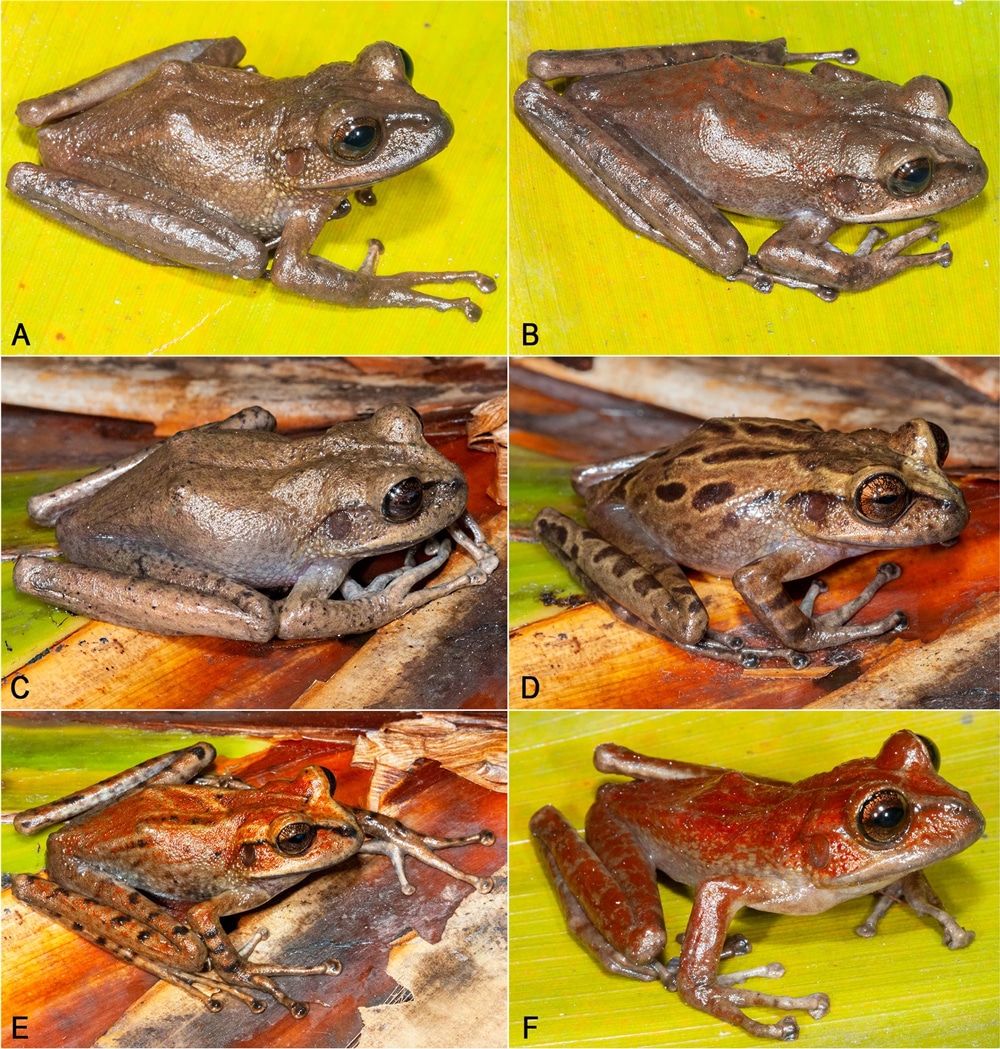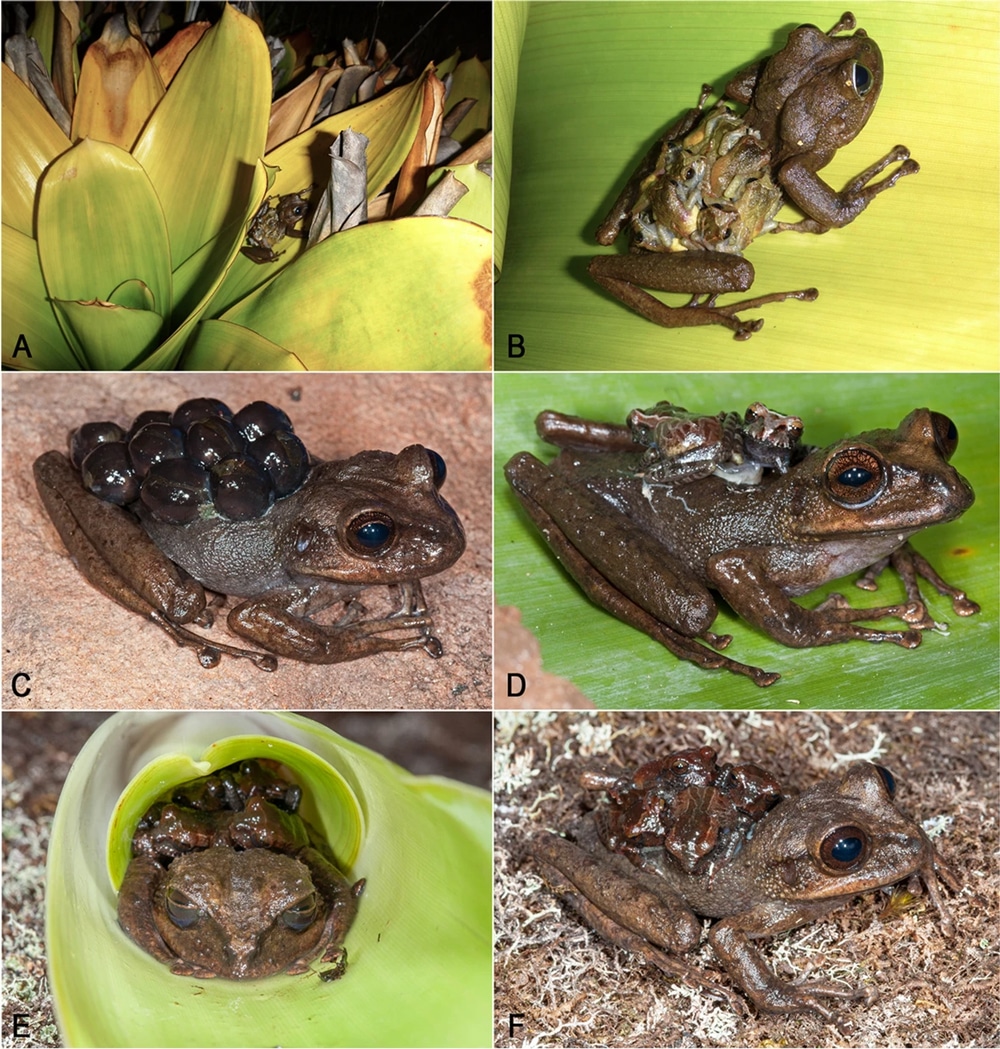This particular frog carries its eggs on the back, and once hatched, the froglets remain on the back for a period of time.
A new frog species from the Wei-Assipu-tepui tabletop mountains of Brazil has been described by researcher Philippe Kok of the Department of Ecology and Vertebrate Zoology, University of Łódź in Poland.
The frog, Stefania maccullochi sp. nov. is a larger species in the Stefania genus. The female holotype measured 72.9mm in length and the males measured 54.6 mm in length. It differs from others in the genus in that it is larger than others, such as Stefania ayangannae and Stefania coxi, yet is similar in size to S. riveroi.

Main color pattern variation in Stefania maccullochi sp. nov. A IRSNB 15854, male. B NHMUK 2023.3188 (PK2098), female. C IRSNB 15855, female. D NHMUK 2023.3193 (PK2148), male. E NHMUK 2023.3192 (PK2137), male. F NHMUK 2023.3187 (PK2084), male. Photos by Philippe Kok
Stefania maccullochi is medium brown in coloration with four to five faint dark chevrons as well as scattered dark brown marks on the skin. The flanks are medium brown and show some mottling. The hands and feet are also medium brown with mottling and yellowish-brown spots. Some can appear red in coloration with no visible spots.
How To Build A Poison Frog Terrarium
Keeping and Breeding Red-eyed Treefrogs
The frog is largely nocturnal, as they were found at night moving on the ground or in low vegetation. This particular frog carries its eggs on the back, and once hatched, the froglets remain on the back for a period of time. Kok says Stefania maccullochi is a micro endemic and morphologically/taxonomically cryptic species of the S. riveroi clade. This clade is currently restricted to the highlands and uplands of the Eastern Tepui mountain chain in Venezuela, Guyana and Brazil, as well as the Pakaraima Mountains in western Guyana. Stefania maccullochi is only known to exist in the Wei-Assipu-tepui tabletop mountain that sits on the border of Guyana and Brazil. It is critically endangered by the IUCN.

Various females of Stefania maccullochi sp. nov. carrying eggs and juveniles. A and B. Uncollected female carrying 9 juveniles. C. NHMUK 2023.3190 (PK2122), carrying 10 eggs/metamorphs. D. NHMUK 2023.3185 (PK2063), carrying 2 near-term juveniles. E and F. IRSNB 15853, carrying 4 near-term juveniles. Photos by Philippe Kok
The complete paper describing the species, “Bones and all: a new critically endangered Pantepui species of Stefania (Anura: Hemiphractidae) and a new osteological synapomorphy for the genus” can be read on the Zoological Letters website.



